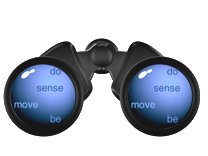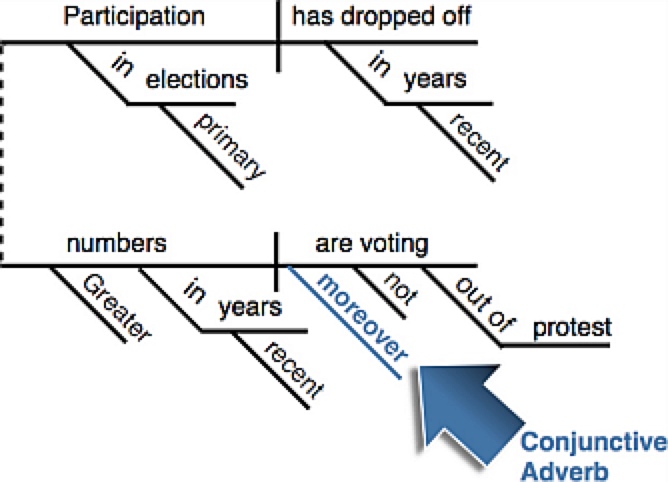
Karl J Sherlock
Associate Professor, English
Email: karl.sherlock@gcccd.edu
Phone: 619-644-7871

A conjunctive adverb—sometimes referred to as an adverbial conjunct, but let's not go there—is an adverb that creates a mood of transition. In fact, many of the transitional expressions you learn in writing coherent paragraphs and essays depend on conjunctive adverbs:
In the example above, "Moreover" is, both, an adverb modifying the progressive (a.k.a. continuous) present tense verb "are not voting," and a transitional word suggesting something is being added to the observations of the previous sentence. Typically, a conjunctive adverb and a subsequent comma come at the start of an independent clause; however, it can also join two independent clauses into a compound sentence as long as the conjunctive adverb is preceded by a semi-colon (or by a comma + coordinating conjunction, but this can also seem redundant).
Like many other ordinary adverbs, conjunctive adverbs can be moved from the beginning to another location in the sentence without losing their intended effect. They are normally set apart by commas, though this rule is not absolute and is not always applied to very short clauses:

Remember that punctuation is not represented on a diagram, so you wouldn't ever place a semi-colon where a conjunction would otherwise go. Instead, put nothing. More importantly, whether or not it's part of a compound sentence, and regardless of where you place the conjunctive adverb in the sentence, when you diagram it the conjunctive adverb must go under the verb it properly modifies.
Here's a helpful list of commonly used conjunctive adverbs that can also be used to write transitions:
Karl J Sherlock
Associate Professor, English
Email: karl.sherlock@gcccd.edu
Phone: 619-644-7871

8800 Grossmont College Drive
El Cajon, California 92020
619-644-7000
Accessibility
Social Media Accounts